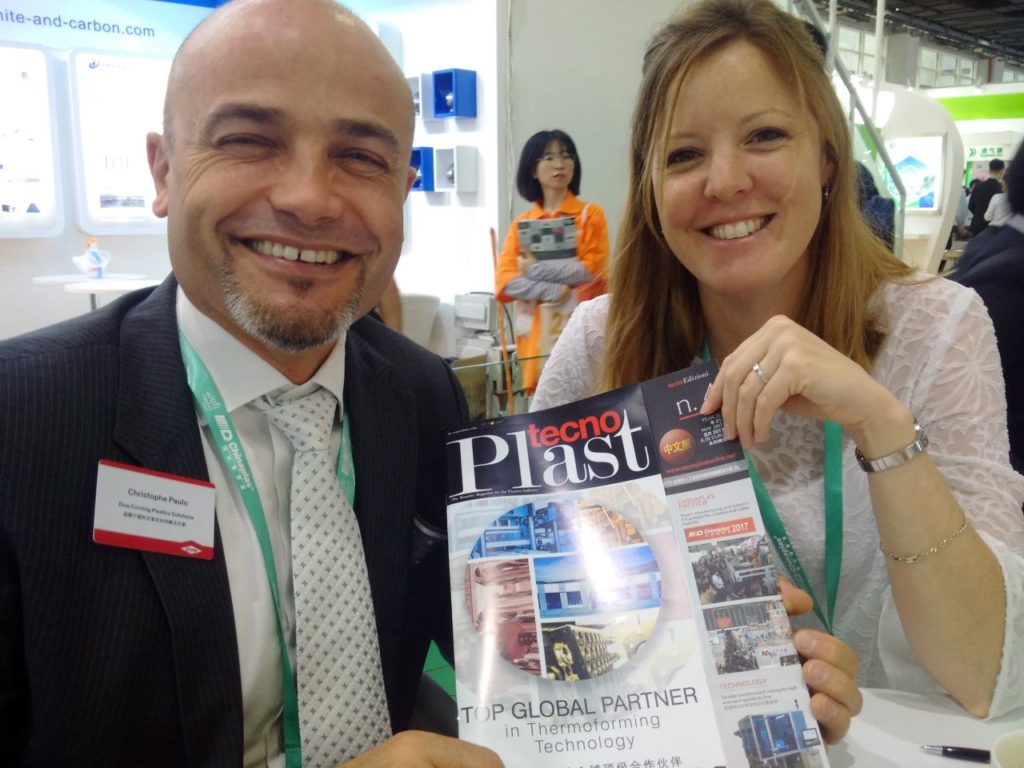Dow Corning, a wholly owned subsidiary of The Dow Chemical Company, launched at Chinaplas 2017 Dow Corning® 43-821 Additive, an advanced new silicone technology designed to resolve mechanical performance degradation and corrosivity issues caused by high loadings of traditional flame-retardant (FR) additives, such as organic phosphorous, in polyamide (PA) compounds. By cutting the total amount of organic phosphorous additive in PA6 and PA66 compounds by 40 percent – while still providing high levels of FR performance – the new FR synergist used at low levels (1 to 2 percent), delivers important benefits for compounders and electrical/electronic component manufacturers. These include restoring key mechanical properties of PA resin, minimizing corrosion of metallic parts that contact the formulation and lowering compound costs by 10 percent or more. This patented FR material, the first in a totally new product family, is being featured here in Dow Chemical’s booth (#10.2G41).
“Balancing performance and cost is a compounding challenge that our new Dow Corning 43-821 Additive is helping to address head on,” said Christophe Paulo, global segment leader, Plastics Solutions for Dow Corning. “Not only does this new product optimize highly filled, flame-retardant PA compounds, but it also delivers cost advantages in three major ways: by reducing the required amount of organic phosphorous additive, by delivering high performance at very low loadings and by avoiding the need for over-engineered inherently flame-retardant materials. Dow Corning 43-821 Additive is a prime example of how the company continues to innovate highly specialized additive technologies that meet very specific customer needs.”
Innovating with Silicone Technology
Glass-reinforced PA6 and PA66 compounds are widely used in electrical/electronic applications in the automotive and appliance industries. When selecting an FR additive, many compounders and their customers prefer halogen-free solutions for sustainability. Organic phosphorous additives such as aluminum phosphinate – often blended with melamine polyphosphate – are a popular choice, but they have a major drawback: the high loadings (up to 20 percent) that are required to meet regulatory requirements. High phosphorous content in PA compounds can result in the degradation of mechanical properties, such as impact, elongation and maximum force at traction, and present high corrosivity.
Dow Corning 43-821 Additive was developed to remediate these issues so compounders and manufacturers can continue to benefit from halogen-free organic phosphorous FR additives – without their downsides. Thanks to its flame retardant synergistic effect with metal phosphinates, incorporated at a low loading of 1 to 2 percent, Dow Corning 43-821 Additive allows the loading of FR additive to be reduced by 40 percent, which enables PA’s desirable mechanical properties to be recovered and corrosivity to be minimized.
Delivering High FR Performance
Although it cuts the amount of FR additive needed, the new Dow Corning product’s synergistic effects on PA resin yield excellent FR properties. These include char formation, anti-dripping and reduced heat generation. Tests indicate that 30 percent glass-filled PA compounds incorporating 13 wt% of aluminum phosphinate and 2 wt% of Dow Corning 43-821 Additive met the requirements for UL-94 V-0 at 1mm.
Dow Corning 43-821 Additives, which are supplied globally in powder form for easy blending with leading aluminum phosphinate additives, are stable at the high processing temperatures needed for glass-reinforced PA.






